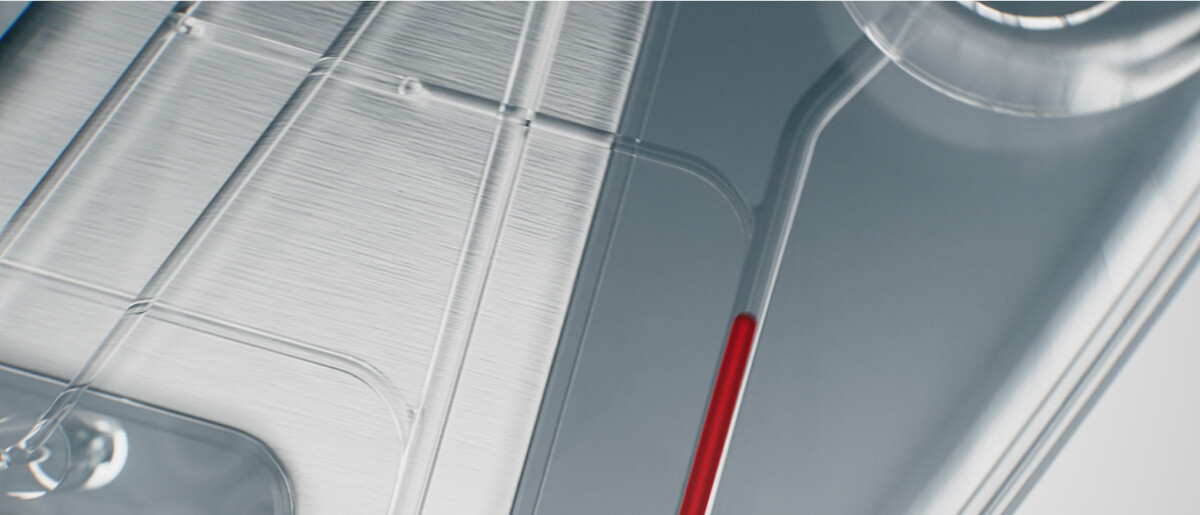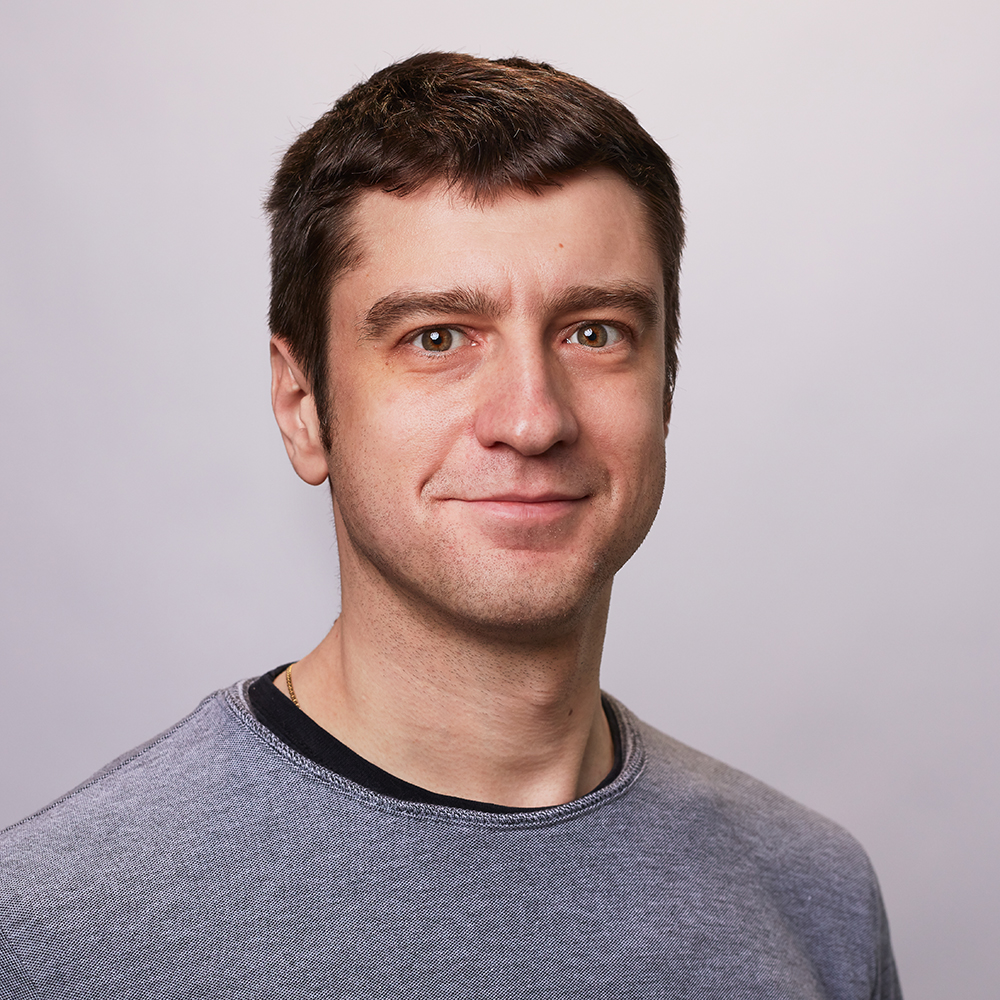Keywords: Automated Insulin Delivery, in silico
Objective
We are developing an innovative blood glucose control technology based on intravenous (IV) blood sampling and delivery of insulin. Compared to current subcutaneous technologies, the intravenous pathway enables more accurate measurements and faster insulin effect.
In this work, we present the effect of the intravenous pathway, combined with a closed-loop controller, on maintaining the glucose level within the narrow glycemic range (70-140 mg/dl) for type 1 diabetes in silico subjects. Given the reduced delays, no prior meal or activity information is required.
Method
The simulations are performed on two in silico type 1 diabetes subject models: the UVa/Padova T1DMS model (33 subjects) and the NudgeBG model (1000 subjects, including the effect of unmeasured sources of variation such as stress and exercise).
For each subject, glucose profiles are simulated for two days involving four meals/day (three main meals and a late-evening snack; 20-70 grams of carbohydrates/meal). Measurement and insulin delivery errors are included in the simulation. The control interval is 15 minutes.
The only subject-specific physiology parameter used to configure the control algorithm is the total daily basal dose (TDBD) of insulin. The control algorithm is designed to maximize the time in range (70-140 mg/dl) and to minimize the time below range (<70 mg/dl), associated with hypoglycemia risk.
Results
UVa/Padova T1DMS model – blood glucose median: 107.7 mg/dl (Q25=106.5, Q75=111.5); time in the 70-140 mg/dl range: 90.6%; time in the 70-180 mg/dl range: 98.1%; time below 70 mg/dl: 0.1%; time above 140 mg/dl: 9.3%.
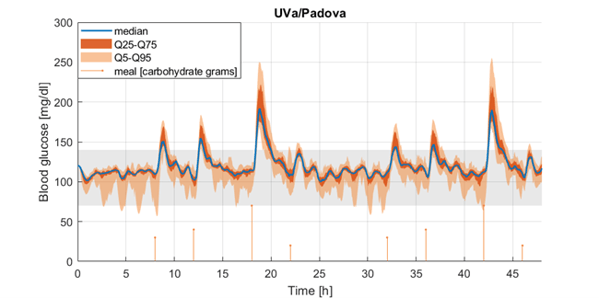
NudgeBG model – blood glucose median: 112.4 mg/dl (Q25=107.9, Q75=118.0); time in the 70-140 mg/dl range: 84.6%; time in the 70-180 mg/dl range: 94.0%; time below 70 mg/dl: <0.1%; time above 140 mg/dl: 15.4%.
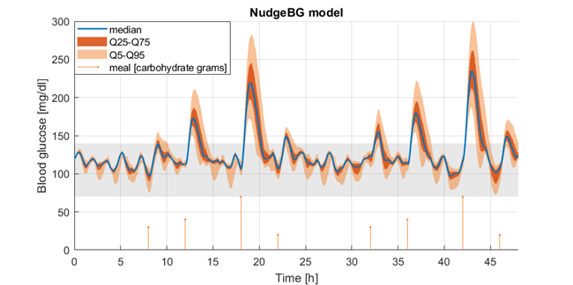
Comparison to CGM
The glycemic control benefits of the IV path become more visible when compared to currently used continuous glucose monitoring technologies. The advantages are noticeable for both time in range and time below range.
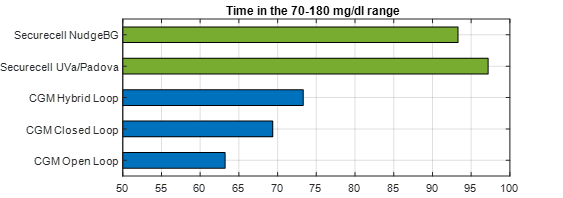
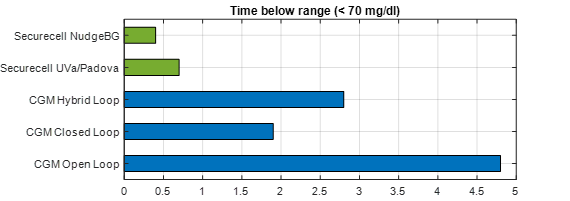
|
The simulations for Milestone 2a show that IV blood sampling for glucose measurement and IV insulin delivery, combined with a closed-loop controller, provide effective blood glucose management. It allows high time in range and reduced hypoglycemia risk, without requiring meal or physical activity announcement. |






